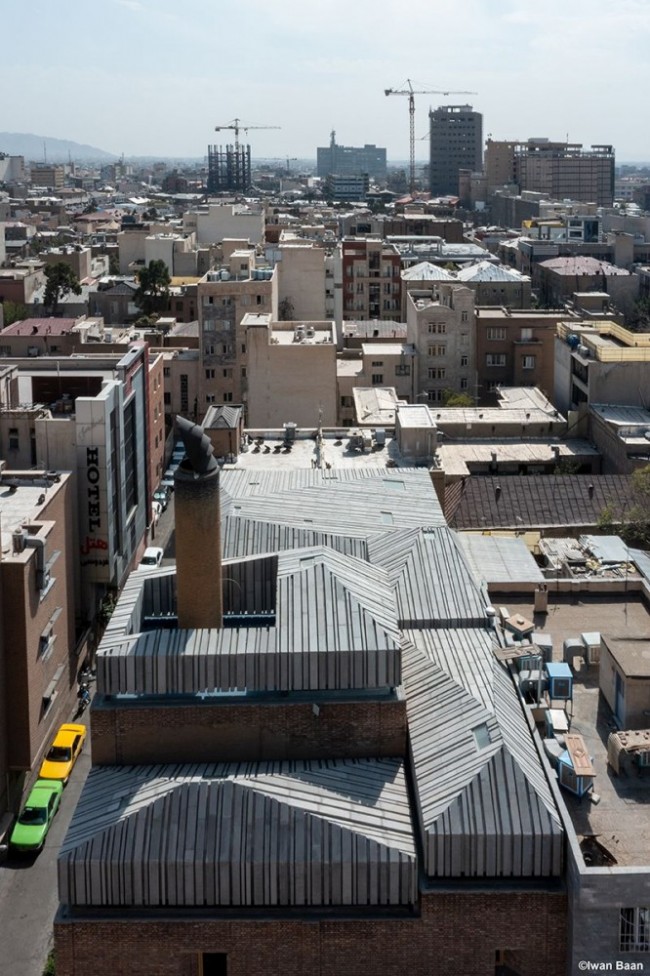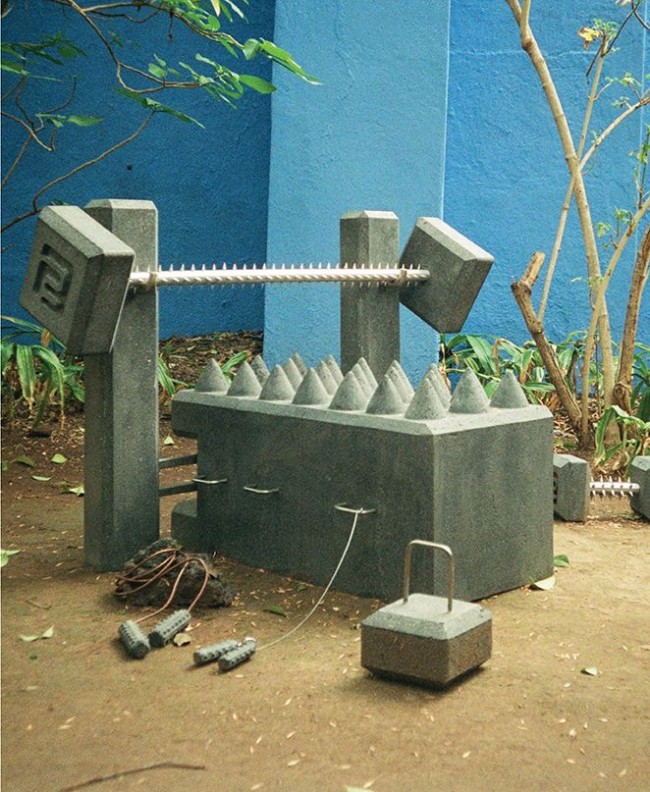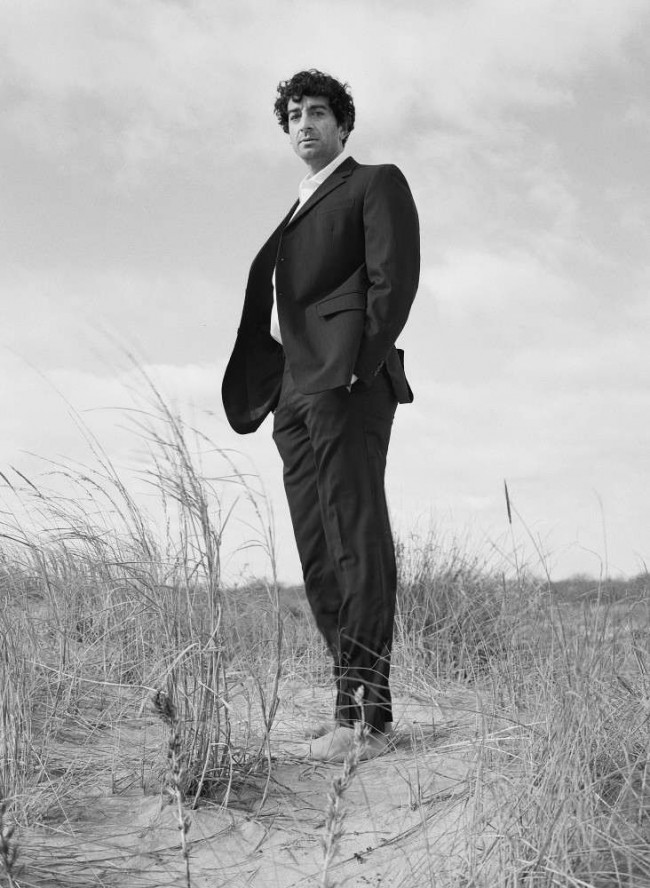SPECIAL BOND: Interview with Noam DVIR and Daniel Rauchwerger

Daniel Rauchwerger and Noam Dvir of BoND photographed by Benjamin Fredrickson for PIN–UP.
In 2019, Noam Dvir and Daniel Rauchwerger, two Israeli-born architects, launched their New York practice BoND (Bureau of Noam and Daniel), named in celebration of the double connection they share as partners in both life and work. Charles Renfro (of Diller Scofidio + Renfro), a friend and mentor, suggested that, similar to Fire Island Modernist Horace Gifford, BoND put their own queer community at the center of their practice. Sophie Mörner, a fellow Fire Island resident and founder of Manhattan gallery Company, poached BoND to work with her on her new space in a former cold-goods warehouse on the outskirts of SoHo. Inaugurated in October 2021, Company’s Elizabeth Street home playfully breaks with white-box gallery conventions, beginning with its silver, graffiti-covered façade and lack of traditional reception area and continuing into its diverse exhibition spaces and hot-pink bathrooms (there’s also a secret lesbian bar in the basement). With several residential and commercial projects in the works, BoND are set to make a name for themselves in New York and beyond. For PIN–UP, they share their unusual story.

The new Company Gallery space on Elizabeth Street in New York City, designed by BoND. Photography by Nick Glimenakis.
Michael Bullock: Noam, we first met in 2010 at the Venice Architecture Biennale. At that time, you were still a journalist.
Noam Dvir: Yes, back then I was the architecture critic for Haaretz, Israel’s main newspaper. But I’ve been a journalist since I was 18. I started during military service, working for the radio station, and after that I became a producer of a television news show — the Israeli equivalent of 60 Minutes. During my fourth year, Haaretz invited me to come on board as a full-time staff writer. I covered architecture, but the same way a journalist would cover hard news. In Israel, architecture and planning are highly politicized — every single stone you place has a political impact.
Daniel, were you still in architecture school at the time?
Daniel Rauchwerger: Yes, I was an undergrad at Bezalel Academy of Arts and Design in Jerusalem. As a student I read Noam’s journalism. He was very prolific. He wrote a piece every day. I imagined him to be much older. Then the way we finally got entangled was because one of my architecture professors hired me to be an arts correspondent at Haaretz and so we started being published together.
You read each other before you first met? This sounds like the plot of a rom-com.
DR: (Laughs.) Noam was very established. I was 22. We ended up first noticing each other in person at a staff brunch for Rosh Hashanah.
ND: Later that year, his studio professor invited me to be on the jury of his class’s final projects. I went to Jerusalem and was thrilled to find Daniel presenting. I fell in love with him — on the spot, quite honestly. It was everything — his energy, his project, the way we looked at each other. I had a very serious boyfriend at the time, but Daniel and I started to see each other anyway.
DR: We thought nobody knew.
ND: Everybody knew.
-
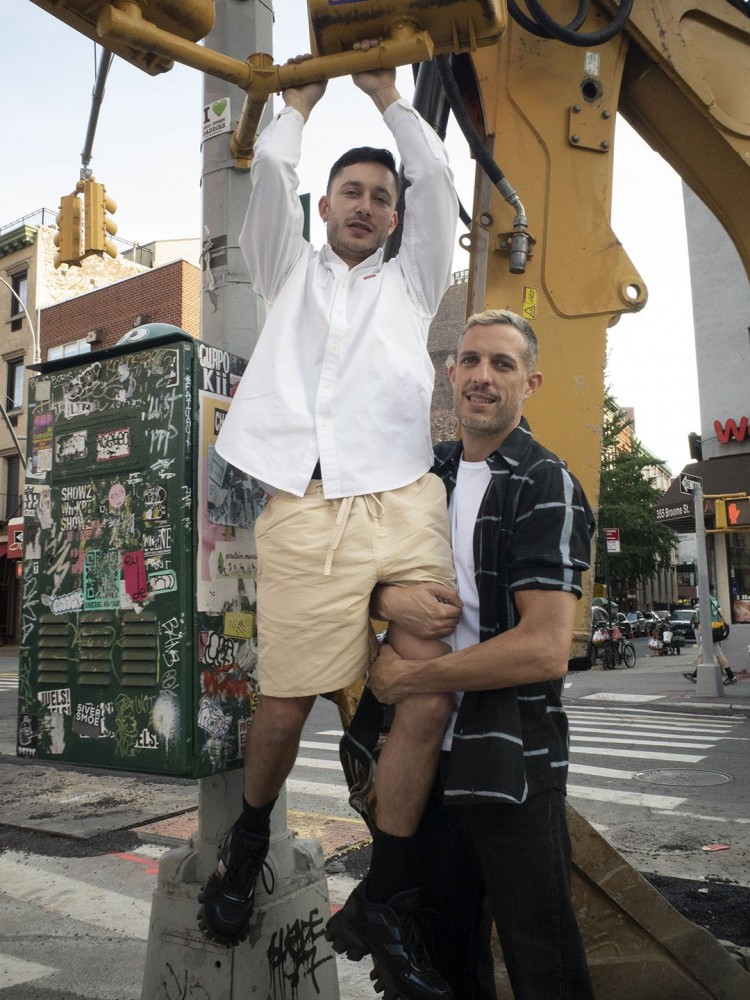
Daniel Rauchwerger and Noam Dvir of BoND photographed by Benjamin Fredrickson for PIN–UP.
-

Daniel Rauchwerger and Noam Dvir of BoND photographed by Benjamin Fredrickson for PIN–UP.
When you first met, was there an immediate understanding that you shared a particular design philosophy?
DR: I was impressed by how motivated Noam is about life in general. I knew I had met someone I could share long-term dreams with.
ND: At that time, I was accepted at Harvard GSD, and Daniel said, “I’m coming with you.”
DR: I’d never been to Cambridge and I wasn’t entirely clear where things were going, but I was down to see where it would take us.
That seems like a big leap of faith.
DR: Not really.
ND: We always knew one day we’d start our own studio. That was obvious by our third date.
DR: Once we were in Boston, I continued contributing to the newspaper. But while I was there I thought, “Why not get my masters too?” I applied, was accepted, and we ended up overlapping for a year.
ND: At GSD we were known as “that gay couple.” (Laughs.)
After graduating, you started working at OMA together. That’s also pretty unusual. Who got the job first?
ND: We came as a package deal. We did most of our post-grad-school job interviews together. Architecture in general, and OMA in particular, is such a time/life commitment. We thought if we worked there together it would be a little nicer.
What was your biggest takeaway from your time at OMA?
DR: My work there is most related to what we do today because I designed exhibitions, which were BoND’s first commissions. I enjoy them because I love working with artists, curators, and galleries. There’s a different dialogue than with other clients. It’s not purely about how something looks but what it means and how it will be perceived. There are more philosophical layers to those projects. Also, that’s what I grew up with — both my parents are artists. It’s important to me to make sure art spaces and exhibitions remain a big part of our practice.
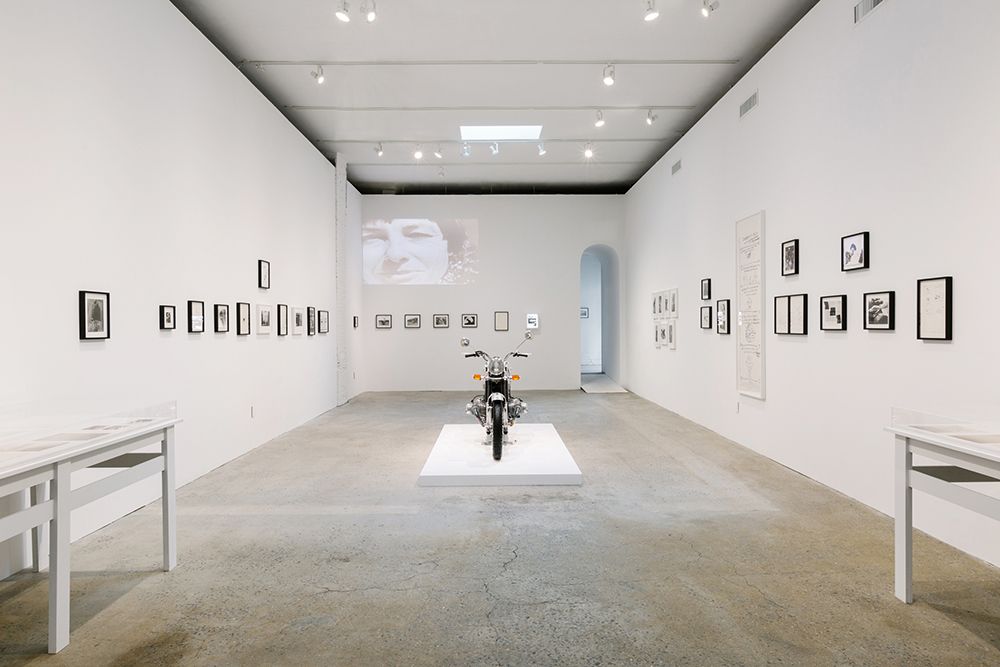
Interior view of the new Company Gallery space on Elizabeth Street in New York City, designed by BoND. Photography by Nick Glimenakis.
Sophie Mörner, whose mission is to usher in a new era of art-world inclusion, not least for the many lesbian artists who’ve been largely sidelined from art history, was an ideal client for you, offering a commission that has allowed your values and interests to come together in your first public project. Can you describe what it was like working with her?
DR: She was really impressed that Noam was so attentive. He asked so many questions and took notes immediately, before she even hired us.
ND: That’s a bit of a holdover from my journalism career. We really interview our clients. But we ended up designing almost an anti-gallery. It’s not a typical Chelsea white cube, there’s little separation between art production and art display, it questions how the art world typically organizes itself. There’s a transparency to the whole place. Few rooms are closed off, there are no signs that say “private.” And it’s also unusual because it has three different types of gallery: a white box, a black box, and a raw box. This variety is already having an impact on what type work their artists make. The white box is a traditional gallery space, the black gallery is dedicated to video, the raw gallery is an indoor/outdoor sculpture or performance courtyard that can open completely to the street. And in the basement Sophie wanted a lesbian bar.
DR: When she told us her needs for a bar, we started thinking about our favorites, like Roses in Berlin. We thought their over-the-top interior would be a great surprise in a gallery space.
ND: Sophie is the one client you can recommend pink cheetah-print rugs to and she will say, “Can I get two of them?”
DR: We also made the bathroom entirely pink. Similar to what we’ve done in residential projects.
-

Entrance area at the new Company Gallery space on Elizabeth Street in New York City, designed by BoND. Photography by Daniel Rauchwerger.
-

Access to the “secret” subterranean lesbian bar at Company Gallery’s new space on Elizabeth Street in New York City, designed by BoND. Photography by Daniel Rauchwerger.
Have brightly colored, monochromatic bathrooms already become a BoND signature?
ND: A little bit. (Laughs.) We like it. But pink is Sophie’s wife’s favorite color, and it’s also a little nod to queer power.
I really liked the shadow gap in the celling of the main gallery. It creates the illusion that it’s floating.
DR: This way, you see the limits of the building and understand where the drywall begins. Drywall is our medium. We’re always finding ways to get the most visual impact out of it. I really love the sculptures of (Israeli artist) Absalon. He worked in Paris in the early 90s and created all these cellular living spaces. He died of AIDS when he was only 28. Much of his work was related to being HIV positive — the sculptures almost look like quarantine pods. His work has had a big influence on us.
ND: Community is definitely a focus for us. A majority of our clients are queer.
Would you say queer or gay?
ND: I would say queer, because we have gay and lesbian clients and a few trans clients too, so we use queer as an umbrella term. Our residential work is queer because we are constantly challenging our given understanding of domestic spaces and helping our clients decide what aspects of their lives they would like to highlight. It’s important to us that in every project there’s a commitment to making something personal and injecting a lot of our clients’ identity into our design.
DR: Because we both started as writers, we always think about the narrative or editorial views within a house. What you put on display is important because each project tells a story. Since our clients are mostly queer, we can discuss sexual experiences, voyeurism, and desire more freely.
ND: That’s actually what BoND is. We help clients avoid the generic and display who they really are.

Spread in PIN–UP 31, Fall Winter 2021/22, featuring BoND Architects.
GET YOUR COPY OF PIN–UP 31 HERE.
Text by Michael Bullock
All portraits by Benjamin Fredrickson for PIN–UP
The story was originally published in PIN–UP 31, Fall Winter 2021/22.




